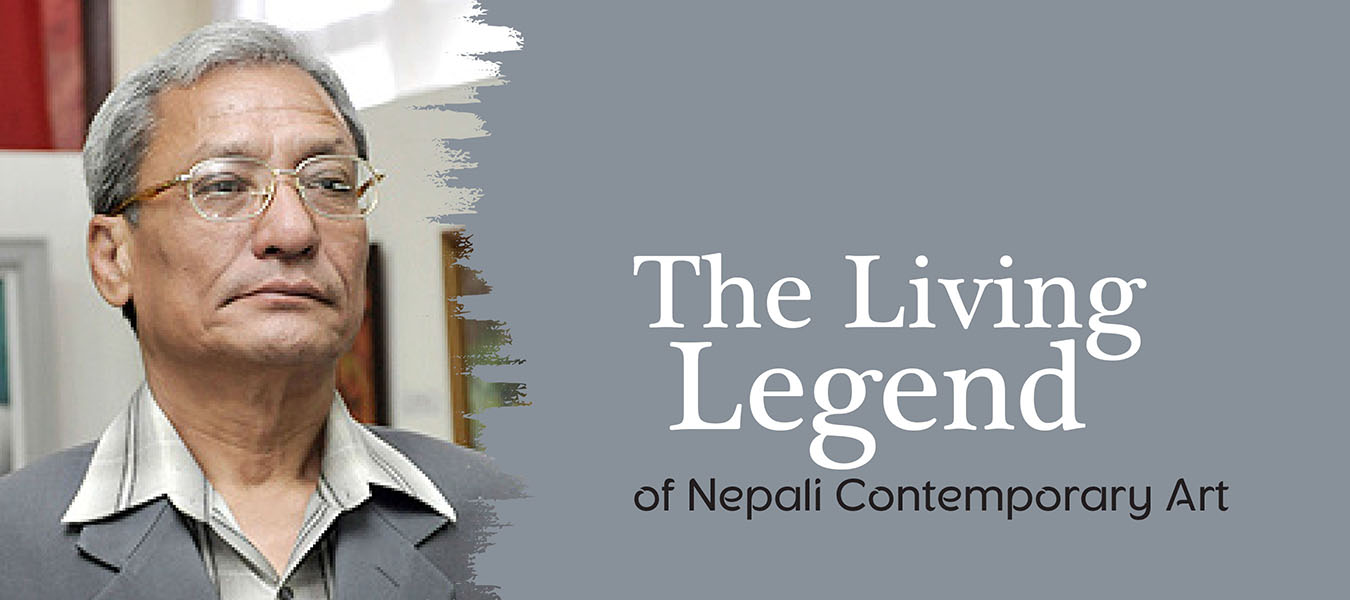KK Karmacharya

The use of colours, lines and brushstrokes create a sort of movement and rhythm in K. K. Karmacharya’s works. As everything is moving and sweeping, the compositions give a sense of cosmic rhythm. The movement resembles multiple things: oceanic waves, whirlpool, whirlwind, bubbling brooks, water spring and so on. As one’s eyes go through the images and colours, the viewer assimilates oneself in the dynamism of the painting freeing oneself from the stagnant situation. The flow of the colour reveals the artist’s energetic movement on the process of creation.
K. K. Karmacharya’s plural and non-referential paintings reintegrate Nepali cultural rituals. Some of his works represent the images of cow. The cow, an animal, acts as if it understands the dead’s feeling that they are thirsty and hungry, and want to eat something. Such juxtaposition of contrary images is apparent in his works. The milk, dung and urine of a cow are necessary elements without which the Hindu rituals can not be observed. The compositions depicts that cow is not only important to the living human beings but a hope for the soul of the dead.
According to Hindu mythology, if a person observes the ritual of Godana (offering cow to Brahmin) in his life, s/he, after one’s death, will be rescued by the cow from the hellish sea to the heaven. Perhaps, the cow in the compositions is rescuing the dead from their miserable condition.
In Hindu culture, cow is personified as mother. She is also called as Laxmi and Gauri. Although she is prayed or worshipped by some people several times in a year, the day of Laxmipuja is the most important one when cow is worshipped in special manner. Cow is decorated with various colours, garlands, beautiful garments and sweet food is offered to her.
Hindu myths and rituals related to cow are not only culturally important but also have pragmatic value. Since cow is respected as mother and has cultural importance, she is protected and cared. Such myths and rituals autometize the socio-cultural practice and enhance the pragmatic values for the socio-economical development. The artist seems anxious about such deteriorating situation and appeals for the preservation of native culture.
Some of the compositions of K. K. Karmacharya explore the beauty of white Himalaya and green mountain. The play of light and shadow, contrastive colours and swift brush strokes do not create the realistic images but the artist’s impressions of the Himalayan mountains in the transitory moment.